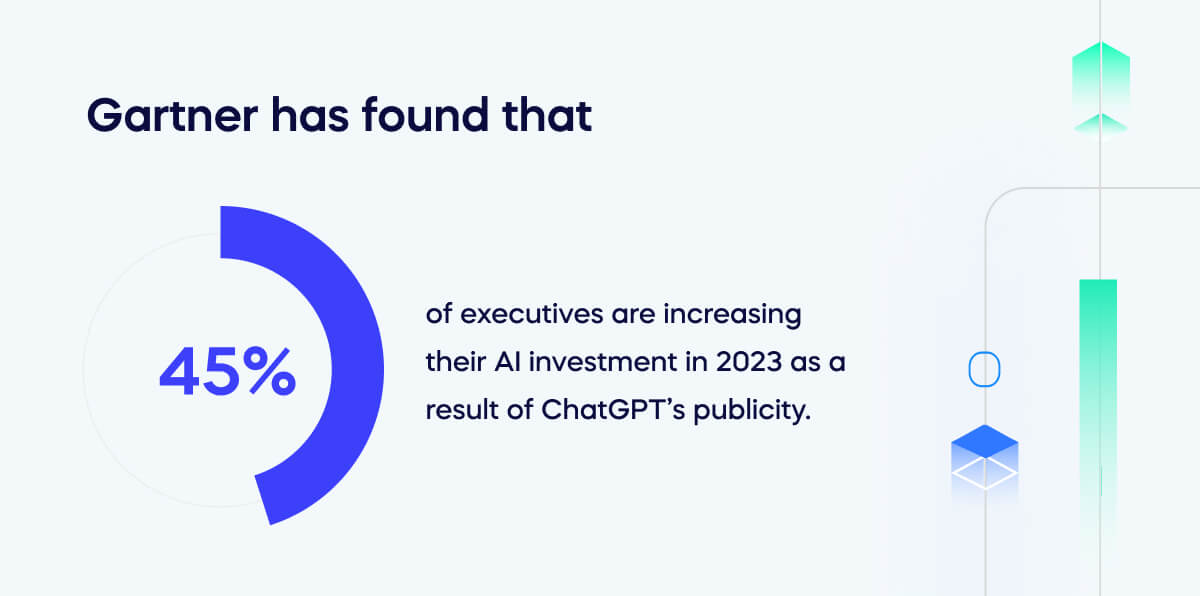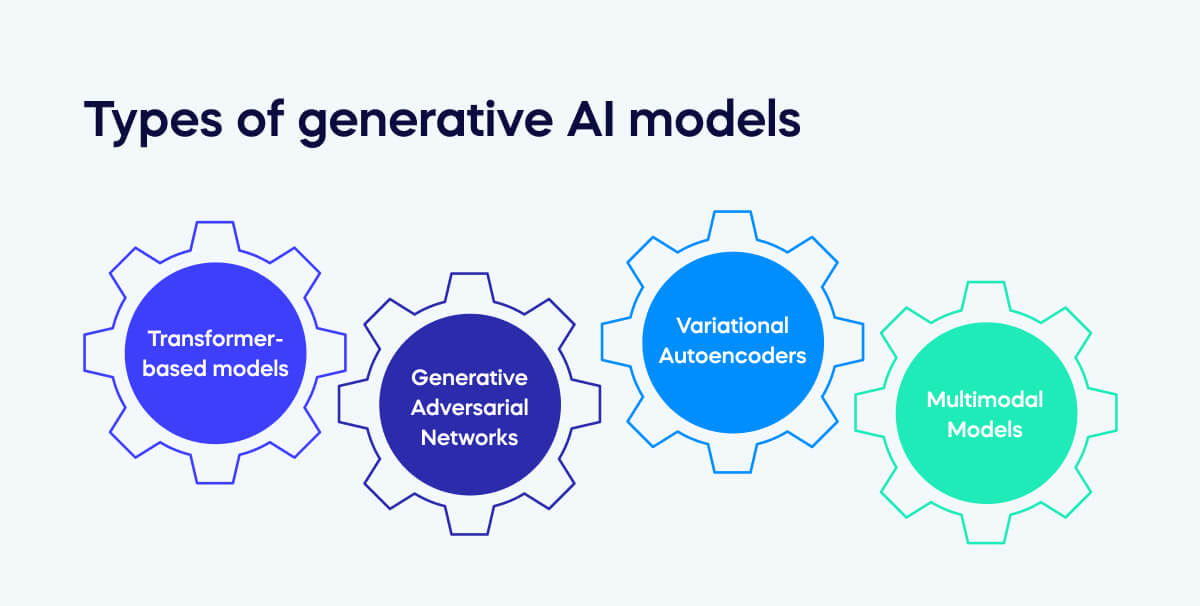Generative AI definition
Generative AI is a type of artificial intelligence that uses neural networks to parse existing data and use it to create new information.
These machine learning systems are trained over time and become capable of generating various content types in response to user prompts.
Generative AI has become increasingly popular in recent years due to products such as ChatGPT, Google Bard, and Bing AI. In fact, Gartner has found that 45% of executives are increasing their AI investment in 2023 as a result of ChatGPT’s publicity.

How does generative AI work?
Generative AI models are given large amounts of data that utilize common patterns and arrangements using a computing process called deep learning. By using neural networks, which process information in a similar way to the human brain, the model learns from the data over time.
The more data received and generated by a generative AI model, the more sophisticated it becomes. In many ways, it’s like the saying ‘practice makes perfect’ – over time, as the model watches how others have done something, it comes up with its own creation, which becomes better as it practices.
According to Gartner, generative AI is projected to reach transformational benefit within two to five years. Arun Chandrasekaran states that ‘the proliferation of generative AI applications is heralding a new wave of workplace productivity.’
What types of generative AI models are there?
Transformer-based models
These AI models are adept at using Natural Language Processing, or NLP, to comprehend the structure and context of language. They are trained with extensive datasets to grasp connections between sequential data such as words and sentences.
These generative AI models are well-suited for text generation tasks – notable examples of transformer-based generative AI include ChatGPT-3 and Google Bard.
Generative Adversarial Networks
GANs, for short, these models comprise two neural network types – a generator and a discriminator. They effectively compete against each other to produce data that looks authentic. The generator works to create a convincing output while the discriminator evaluates its authenticity.
Both components become increasingly sophisticated over time, producing more authentic-looking results. Examples of GANs include DALL-E and Midjourney.
Variational Autoencoders
VAEs make use of two networks, like GANs. In this case, though, the networks are encoders and decoders. These work to interpret and generate data. The encoder’s job is to compress the inputted data and simplify it. The decoder then reconstructs the compressed information into an output that resembles the original data but is not identical.
Multimodal Models
These generative AI models can simultaneously process various types of data, such as text, images, and audio. They can generate more complex and sophisticated outputs – for example, creating an image using input comprising both text prompts and text descriptions of image prompts. Examples of these models include DALL-E 2 and OpenAI’s GPT-4.

How is Generative AI applied?
Text generation – Content, Chatbots
Generative AI can produce human-like copy, which can be useful for creating certain types of content or coming up with ideas. Chatbots and virtual assistants also use this style of output to respond to user queries and personalize responses.
Image generation – Marketing, Design, Art
Realistic images can be produced for marketing purposes, design, artistic works, and even video game design, which can augment or speed up virtual character creation.
Drug discovery – Pharmaceuticals
Pharmaceutical industries use generative AI to develop various molecular structures that create different drug types. The technology accelerates the drug discovery process by suggesting new chemical compounds with desired properties.
Anomaly detection – Network Security
Anomaly detection systems use generative AI to create synthetic data representing ordinary behaviors. Any deviations from the generated data can be flagged as anomalies, which can assist with fraud detection, quality control, and network security.

Benefits of Generative AI
Personalization
When companies use generative AI models for creating chatbots and virtual assistants, these tools can create personalized dialogues for customers. It can also create tailored content recommendations and advertisements, which leads to a higher quality customer experience.
Automation
Many repetitive tasks can be sped up using generative AI, such as report generation, text summaries, and responses for customer support. This reduces workloads for human workers, improves employee productivity, and raises business operational efficiency. It will also result in the need for increased employee adaptability – Gartner says that over 50% of software engineering leader roles will require generative AI oversight by 2025.
Creativity
Transformer-based and multimodal models are particularly adept at providing creative suggestions in response to prompts. This can help human creatives develop content ideas, get them started when they are having writer’s block, or give them thinking points.
Cost Reduction
With various tasks being automated thanks to generative AI, workflows will become more efficient, subsequently assisting with cost optimization for businesses.
Education
Generative AI can provide personalized educational content and tutoring that can be adapted to a student’s needs, such as their reading age and learning pace.

Challenges of Generative AI
Content diversity and quality
Generative AI should not be relied on to produce completely accurate or diverse content. Sometimes, responses may be biased, offensive, or low-quality.
Data privacy and security
Concerns have been raised about the fact that these models can memorize and regenerate sensitive or private information from their training data.

Ethical and responsible use
As with any technology, generative AI can be misused. In this context, it could be used maliciously to create damaging deep fake content or to spread misinformation.
Data availability and quality
Obtaining high-quality training data is crucial for these models, and this can be a difficult process – especially for niche or specialized applications.
Safety and security
Generative AI should be kept safe and secure. It should be resistant to security attacks and not produce harmful or malicious content that could have a negative impact on users.